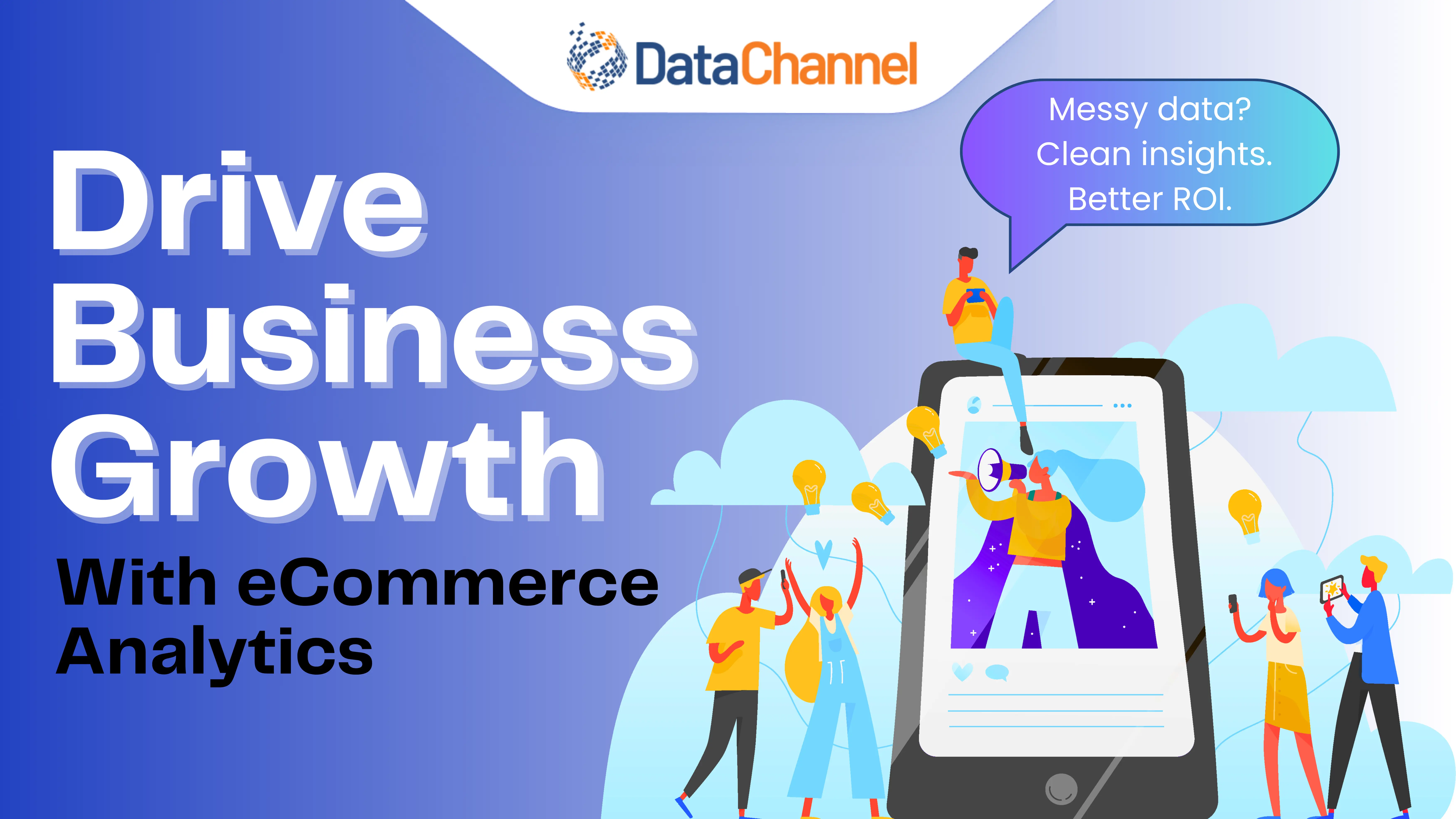
Navigating the Era of Cookie-less Marketing: Embracing First-Party Data Solutions

Third-party cookies are the kind of cookies that are placed on your browser by domains other than the one you're visiting. These cookies serve a temporary purpose in terms of tracking user’s behavior and interactions on other websites. Ever since the development of first-party cookies in 1994 to facilitate easier logging into websites/applications (by remembering the login credentials or details), third-party cookies also came into play and have been leveraged and exploited for enhanced retargeting.
Let’s say you search for stationery items on xyz.com, and this domain participates in online ad exchanges utilizing third-party cookies, subsequent browsing on other sites may lead to encountering ads specifically related to stationery items. This personalized ad delivery is made possible by the tracking of your browsing history across the web by these stored third-party cookies.
In this blog, we’ll be discussing in detail how to navigate the era of cookie-less advertising, and also help our readers and users to embrace first-party data solutions for the win.
Why the World is Going Cookie-Free
The widespread adoption of third-party cookies has long been a cornerstone of digital marketing strategies, enabling advertisers to track user behavior across websites and deliver targeted ads based on browsing history. However, concerns over privacy violations and data misuse have prompted regulatory bodies to take action. Initiatives such as the General Data Protection Regulation (GDPR) in Europe and the California Consumer Privacy Act (CCPA) have imposed stricter regulations on data collection and usage, leading to increased scrutiny of third-party tracking mechanisms.
Furthermore, major tech giants such as Google, Apple, and Mozilla have announced plans to phase out support for third-party cookies in their browsers. Google's decision, in particular, to sunset third-party cookies in Chrome by 2023 has sent shockwaves throughout the digital advertising industry. This move signifies a fundamental shift in how online tracking and targeting are conducted, necessitating alternative approaches to audience segmentation and campaign optimization.
The shift towards cookie-free marketing is driven by a desire to prioritize user privacy and consent while maintaining the effectiveness of digital advertising. By relying on first-party data collected directly from users through consent-driven interactions, marketers can establish more transparent and trustworthy relationships with their audience. Additionally, first-party data is inherently more reliable and accurate, providing deeper insights into consumer preferences and behavior.
How do third-party cookies work behind the scenes
Third-party cookies used to be one of the biggest assets for the marketing teams from building entire customer journeys without having to worry about pinpointing behaviors to specific users: cookies did it all. But how did the cookies work?
To understand that concept, let’s take a quick example of one of the most (in)famous behemoths – Facebook. I’m sure you must have seen the facebook like, share, and comment buttons on the social media platform. These buttons serve as more than just interactive tools for users, they function as cookies. Once you hit any of these widgets, it provides Facebook with insights into user’s behavior such as their interests, likes or dislikes, and even engagement with other people’s content.
On similar lines, when you encounter a blog post and opt to share it via the Facebook widget embedded on the website, you inadvertently activate a cookie that attaches itself to your browser. This cookie then proceeds to track your online activity across various websites featuring the same Facebook widget, enabling Facebook to further refine its understanding of your browsing habits and preferences.
Privacy Sandbox and the Phase Out
After Safari & Firefox, Google has also finally decided to start its process of the total whitewash of the 3rd party cookies. Starting in the Quarter 1st (January 4th Onwards) of 2024, Google Chrome will be restricting third party cookies for 1% of its users. The total elimination of these cookies is going to be eventually completed by the last quarter of this year.

As quoted in one of its videos, after realizing that some of the methods of tracking user behaviors and showing relevant ads such as third-party cookies and other identifiers (such as pixels) have been long due for an overhaul. With its Privacy Sandbox initiative, Google Chrome aims to create technologies that both protect people's privacy online and give companies and developers tools to build thriving digital businesses. The Privacy Sandbox reduces cross-site and cross-app tracking while helping to keep online content and services free for all.
Preparing for a world beyond third-party cookies

In the advent of some of the robust initiatives taken to eliminate the third-party cookies, businesses need to find sustainable solutions to overcome this axing of undisclosed tracking of online user behavior.
First-Party data at its best
Without the third-party cookies, audience segmentation and creating lookalikes on ad platforms is going to be a tough task for marketers. But, with the right set of tools that enable fine-tuned audience segmentation & retargeting using first-party data.
First-party audiences can be created by collecting customer behavioral data across the websites and mobile apps they surf on. This behavioral data stored in separate data silos can be unified and centralized into a single location (Single Source of Truth) using tools like DataChannel.
After secured storage, this first-party data can then be transformed (by simply using SQL) to build custom data models for instance to identify "users who added-a-product to their cart, but didn’t end up buying it." After creating the desired audience segments (filled with all the unique customer identifiers), these data sets can be synced to any desired ad platforms or CRM tool.
Conversion API over Pixels
After first-party data, another major tool that can help marketers aim for targeted ads and personalization with precision are Conversion APIs. Earlier advertising platforms used to rely on client-side pixels to gather information on conversions such as page views and product clicks. However, the effectiveness of these pixels has substantially decreased over time with ad blockers and browser updates.
In a recent article, Meta formally acknowledged the extent of this problem, estimating that it underreports iOS web conversions by approximately 15%.
One prominent example is – Snapchat’s Conversion API that enables advertisers and businesses to track and evaluate the success of their Snapchat ad campaigns. Businesses can record and track significant user behaviors once they interact with Snapchat advertising, such as when users make purchases, sign up for services, or fill out forms. Businesses can improve their campaigns based on real-time data, receive granular insights into the effectiveness of their Snapchat ads, and precisely attribute conversions by adopting the Conversion API (in conjunction with reverse ETL).
Using CAPIs, advertisers can easily send conversion events (web, app, and offline) directly to ad platforms from their back-end systems, meanwhile also ensuring that this data transfer is handled securely, efficiently, and with control.
Data Anonymization
Data Clean Rooms have emerged as a secure and effective solution for multiple organizations to collaborate on customer data without compromising privacy.
Most recent prodigy leveraging Data Clean Rooms is Amazon Marketing Cloud, which only returns aggregated reports with at least or over 100 unique customers. The measurement solution is completely privacy-compliant and doesn’t use third-party cookies for capturing any personally identifiable information (PII). One of the best features of Amazon Marketing Cloud is data anonymization in which advertisers can also feed their custom data (such as data collected from Amazon Ads) in the Amazon Marketing Cloud to drive holistic and data-driven insights. Both the advertiser and Amazon Marketing Cloud can not access each other’s data on an individual customer level and only identify specific audience groups or the percentage of audiences that interact with your marketing content or products on or off Amazon. These insights can then be used to drive new product development and ad targeting campaigns.
Build your Own Marketing Data Warehouse
When it comes to leveraging first-party data or keeping a close track of conversion events, building point-to-point solutions might not be feasible. For advertisers making use of multiple ad platforms, along with CRM & customer engagement platforms, identifying and attributing which conversion came from which source is an extremely cumbersome process.
With attribution models infusing both first & last touch analysis, building and identifying marketing efforts that drive full funnel conversion has become very important today.
Incomplete tracking, reporting, and optimization can and will lead to wasted efforts, money and ultimately a churned customer. Having a single source of truth that lets you centralize all your data can prove to be a boon in disguise. Platforms such as DataChannel enable you to build your single source of marketing truth — first collecting all your data from multiple sources and activating the same with granular audience segments and insights into desired business applications as well.
Your marketing data warehouse will save you the time required to sign in to a dozen different platforms to collect the data they need to make better decisions or they waste so much of their time on data collection that they don’t have time for analysis and optimization.
Either way, data warehouses alleviate those pains by consolidating all the data to create a single source of truth. This helps marketers get a better handle on important metrics like customer acquisition cost (CAC), return on investment (ROI), return on ad spend (ROAS).
First-Party First with DataChannel
The sunset of third-party cookies marks a pivotal moment in the approach and process of how marketer’s leverage behavioral data. It is high time that marketers make a shift and redirect their priorities toward other tools for capturing customer data without compromising their privacy. The tools and tactics mentioned above are definitely going to be instrumental for them in this switch.
You can also start leveraging your first party data better with your single source of truth and DataChannel. Unlock the true potential of your data assets and build granular audience segments with us, book your demo call today.
Try DataChannel Free for 14 days









